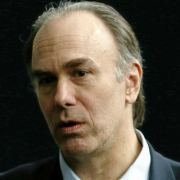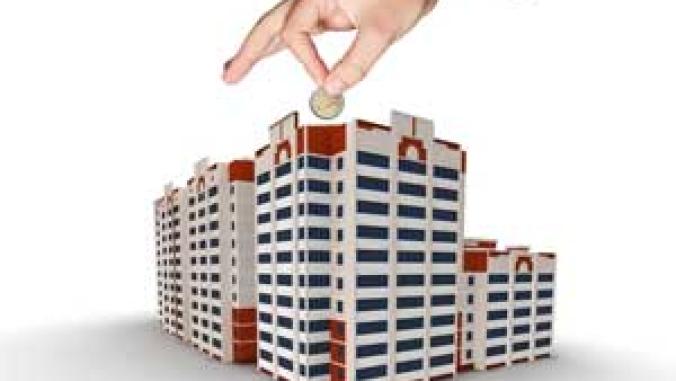The Market LEEDer
<p>In the wake of an article on how SOME LEED-certified projects are not performing well, the Blogosphere and Twittersphere are alive with the sounds of dull, repetitive droning from the anti-LEED crowd.</p>

The Chartwell School - Image by Michael David Rose, Courtesy of EHDD Architecture and AIA
Disclosure: I am a USGBC board member, but the opinions expressed herein are my own.
[Rant on.] In the wake of a New York Times article on how (gasp!) SOME LEED-certified projects are not performing well (we kinda, sorta think) in terms of energy consumption, the Blogosphere and Twittersphere are alive with the sound of Muzak -- the dull, repetitive droning of the anti-LEED crowd crowing about how LEED is a sham and should be replaced, blahblahblah.
The blahggers chatter on about how all buildings should be required to use the same amount of energy per square foot (about as feasible as saying that everyone of a certain height should weigh the same), about how black helicopters should descend in the middle of the night with pneumatic drills and blowtorches to remove the offending plaques from these bad buildings, etc. They talk about LEED not wanting to offend people in order to build market share, as though that were a bad thing. Newsflash: When you have market share, you can actually get things done on a meaningful scale and that's what's starting to happen.
Of course, there are positive suggestions amongst the dreck, such as emphasizing measured energy consumption more, requiring energy and carbon reporting, etc. These are good ideas (except when they are accompanied by "LEED is bad for the country" drivel) that are about three years behind where the USGBC is already thinking and moving. LEED in fact is moving toward and beyond carbon neutral and sustainable toward being carbon positive and restorative.
People need to stop pretending they are providing any insight on issues LEED needs to deal with. Honestly, anyone who thinks that the issues of energy use per square foot, how to get at operations energy though a design standard, how to make energy modeling more representative of what actually happens in a building, etc. haven't been discussed at LEED since 1995, needs to stop sniffing whatever it is they're sniffing. Really . . . it's bad for you.
As for the critics who think LEED can or should "just fix it." Believe me, if there were a magic fairy wand to wave that could make that happen, lots of folks at USGBC would be grabbing it. But, first off, LEED ain't broken. And second, about the stuff that isn't working right, people at USGBC live it every day and want it fixed in the worst way. USGBC's standard-setting process has been a matter of public record for years and changing it is not a simple matter, particularly when you consider how much human capital and economic infrastructure has built up around LEED. As a thought (or practical -- it means much more that way) experiment set up some cones or obstacles somewhere and weave and dodge around them to get a sense of how easy or hard it is by yourself. Then, put a loved one on your back and try and do the same thing. Now you UNDERSTAND what momentum and inertia can do to "progress." Keep in mind, that a loved one will be ~50 percent to 150 percent of your own mass, while the USGBC today, compared with its "nimble" days of when it was released in 2000 now has a membership (mass) that is 80 TIMES as large.
The Times article's attempt at "balance" was to note that the energy laggard with which they led the story (which, incidentally, was designed before LEED was public) would not be certifiable today. All well and good, but how about talking about buildings that exceed performance expectations and that do measure energy use assiduously? For every LEED building that doesn't meet expectations, there are three that do and better. The LEED Platinum, AIA Top-10 Green Project, Chartwell School beat California's nation-leading energy standard by a whopping 60 percent, and whose performance is supported by two years of intensive monitoring. Far from a race to the bottom, LEED encourages buildings to achieve ever more as evidenced by NASA's Ames Research Center's aspirations.
I mean, heaven forbid that we update the energy conversation from the '80s when it was all about operations. Depending on the building, the induced transportation energy, the embodied energy of the materials or the energy to provide and process water (which outside of the building requires almost 4 percent of the nation's TOTAL energy!), can exceed the operational energy, all of which LEED addresses directly or indirectly. Everyone agrees that LEED is not perfect and frankly it never will be because "perfect" is a relative term, not an absolute (theological discussions aside).
The thing that really pisses me off is when people who should be helping something like LEED succeed cut it down. The only thing that benefits is the status quo. So stop your whining and moaning and put your energy into moving toward what Elaine Gallagher Adams calls the seeds of the municipal carbon economy where LEED is playing a key role in getting buildings beyond code minimum. [Rant off. Medication's kicking in . . .]
Municipal energy saving programs, such as the highly successful LADWP program that saved over 300 GWh at a cost less than baseload coal, provide a perfect support and complement to municipal green building requirements (queasy lawyers notwithstanding). Los Angeles Mayor Antonio Villaraigosa and his team should be congratulated for a very well-performing program.
The latest winner of the Look-Grandpa-I-picked-up-the-$20-bill-you-said-was-fake-but-it's-real! contest, is Michaels Stores Inc. for installing a portfolio-wide energy management system by Site Controls that cost-effectively saves 137 million kWh per year, eliminating nearly 200 million pounds of carbon dioxide. [Author's Note: The Look-Grandpa call-outs are not intended to make fun of the dedicated businesses, companies and consultants finding these amazing savings. Rather it's a poke at all of the Flat-World types who believe that investing in energy efficiency and carbon reductions is not cost-effective and therefore should not be a focus of corporate and public policy.-- RW]
Rob Watson is the executive editor of GreenerBuildings.com. You can reach Rob at [email protected] or follow him on Twitter @KilrWat.
The Chartwell School - Image by Michael David Rose, Courtesy of EHDD Architecture and AIA





